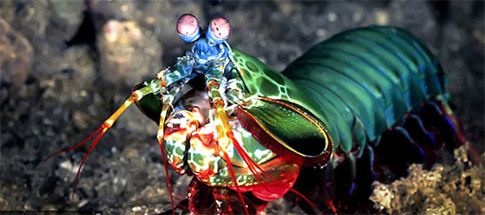Charles Darwin – and many of his contemporaries (his cousin Francis Galton, and Ernst Haeckel among them) – were not exactly objective scientific observers. These men were materialists who were – at best – agnostic on matters of faith; at worst – openly hostile to religion.
Their fervent hope was that transmutation (as the theory that would become evolution was originally known) would validate their lack of belief in a Creator. So they couldn’t help but discover proof in their observations that really wasn’t there.
Haeckel was so enthusiastic about evolution he was unable to restrain himself from doctoring the actual evidence ~
Despite the wreckage wrought via this godless worldview, the deceptive dogma still remains stubbornly rooted in the progressive movement. And Darwin’s devotees today are still looking at the evidence and trying to make it fit their broken theory. It must be awfully frustrating for them when every new discovery about our universe – from the vastness of the cosmos to the intricacy of living cells – contradicts evolution and proclaims intelligent design.
So here is a challenge for all those determined Darwinists out there… how did THIS evolve? ~

Isn’t this just one of the craziest creatures ever? Peacock mantis shrimp aren’t peacocks, mantids, or even shrimp. (Although whoever named them obviously went with their first impression – colorful, small, and insect-like.) These feisty little sea dwellers (they’re 2 to 7 inches long) are crustaceans, but not shrimp, as Answers in Genesis explains ~
They are actually from an entirely different order, Stomatopoda, which means “mouth foot” since their gills are located on their abdomens instead of near their heads like most aquatic life.
While their appearance is stunning – even more so is the punch these critters pack – they’re some of the deadliest predators on the Indo-Pacific coral reefs ~
Peacock mantis shrimp have two arms called dactyl clubs on the front of their bodies. They use these clubs like boxing gloves to smash the shells of their prey. The clubs are launched at 50 mph and accelerate faster than a .22 caliber bullet. With only one-tenth of that speed, humans could throw baseballs into orbit!
In 0.003 seconds, peacock mantis shrimp strike objects with 340 pounds of force. That’s nearly the same force a karate expert uses to break a slab of concrete!
In the wake of their punches, the surrounding water temporarily boils. When the bubbles collapse, they produce tiny pinpricks of light as well as shockwaves that momentarily heat the surrounding water to nearly the temperature of the sun’s surface—10,000°F! These shockwaves can kill the prey even if the mantis shrimp miss their target. (For more, check out sonoluminescence cavitation online.)
This incredible punching ability not only aids them in creating their own habits – they break up rocks and corals to build burrows – it’s also the reason you’ll rarely find them in aquariums ~
If they are displayed, they must be kept in shatterproof acrylic tanks—alone. These ruthless, territorial predators don’t play well with other creatures.
These fascinating animals offer unique opportunities for researchers in the field of biomimetics (the practice of studying nature specifically as inspiration for new technology ideas) ~
Their appendages have several layers of protection: a hard, ceramic-like outside shell, and several soft, elastic inside layers stacked like corkscrews. The inner layers absorb the shock from the punches, preventing fractures or breaks. This resilient design works so well that researchers hope to mimic it in a new carbon fiber material used to strengthen aircraft and automotive panels, athletic helmets, and even military combat armor.
The eyes of peacock mantis shrimp are also amazing, among the most complex in the entire animal kingdom ~
Their eyes contain millions of light-sensitive cells called rods and cones, which provide color vision. Humans have only three types of cones: red, green, and blue. Peacock mantis shrimp, however, have up to 16 types of cones. This means they can detect some color differences quicker than we can.
Polarized light reflects differently from cancerous and healthy tissues. Because peacock mantis shrimp can see polarized light, scientists are studying their eyes in an attempt to create small cameras to identify cancer cells through polarized light. This kind of early detection could save countless lives.
Aren’t peacock mantis shrimp awesome? What are the odds these wonderfully unique, flamboyant creatures actually evolved through some random, unguided process over billions of years? Zilch.
God designed them, created them, and placed them in the sea for us to discover, enjoy and possibly learn from – to the benefit of all mankind. Truly amazing!
~~~~~~~~~~~~~
Related:
Mantis Shrimp Packs a Punch ~ Predator in Paradise ~ Another cool video, from NatGeo





